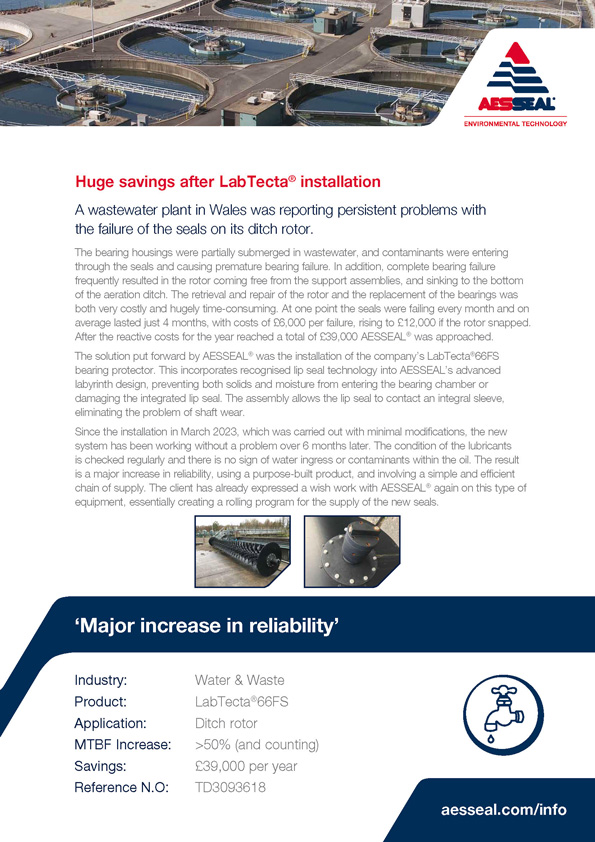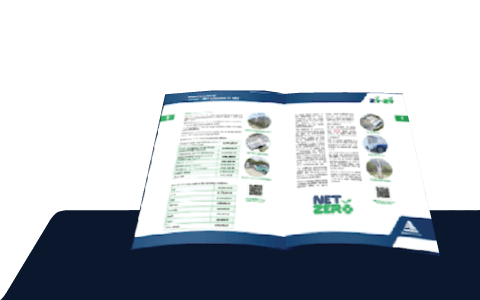
A wastewater plant in Wales was reporting persistent problems with the failure of the seals on its ditch rotor.
More Industry Related Content
By Kristian Herdman
What was the customers problem?
The ditch rotor was failing 2-3 times per year. The failure was at the non-drive end bearing assembly which had become contaminated with grey water from the aeration tank. The grey water had in turn contaminated the bearing which then seized. The drive end continued to rotate, causing the main body of the rotor to shear and fall into the settling tank.
How did you learn about the problems the customer was experiencing?
This problem was highlighted following a Bearing Protection Presentation which I gave to the Welsh Water Reliability Team during their quarterly reliability meeting held in Rhyader, MidWales. The reliability engineer for Cardiff at the time then contacted me to have a look at a ditch rotor failure at Coslech Treatment Works.
How hard was it to retrieve the rotor?
This is a wastewater treatment site, so the rotor had to be retrieved from the aerated grey water using a hired mobile crane – a very unpleasant job. While the rotor is out of action the settling tank is aerated using hired equipment so that the treatment process can continue. There is the considerable cost of the mobile crane, hired equipment and of course the cost of the rotor repair.
How did you go about convincing the company to invest in the LabTecta?
Due to the relatively complex nature of the bearing assembly, I passed this through Team Centre technical review. We discovered that the assemblies had repeatedly been repaired incorrectly by a local repair company. I explained this the reliability engineer and was given the go-ahead to contact the ditch rotor OEM in Manchester to gather OEM drawings. We revised the LabTecta design and re-quoted accordingly. This level of technical support gave the engineer the confidence to proceed, and to give us the order.
How long did it take to install?
I travelled to Manchester to assist the OEM with the installation. It took less than 30 minutes, thanks to the level of detail used during the technical review process. They have now rolled this out to ALL of this particular type of rotor in the Cardiff area - seven in total in 2023. I have since quoted and supplied the LabTecta FS to the reliability engineer in the North East Wales area, for a ditch rotor at Brynrefail WWTW. That was as a result of the contamination and failure of the drive end gearbox. As a result of the success of these installations, I have been invited back to the reliability meeting later this year to speak to a number of other reliability engineers. They all have ditch rotors (of varying designs) in their areas.







